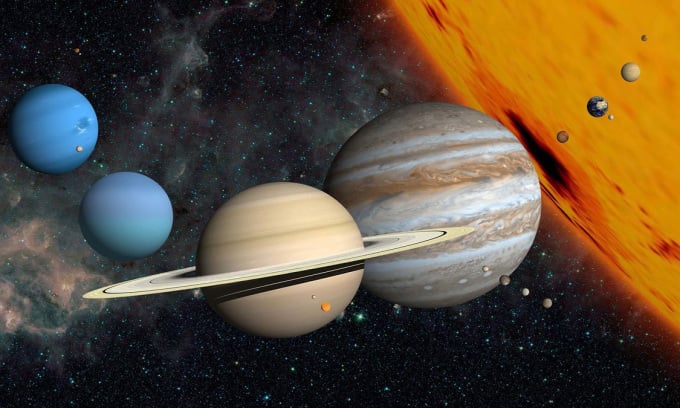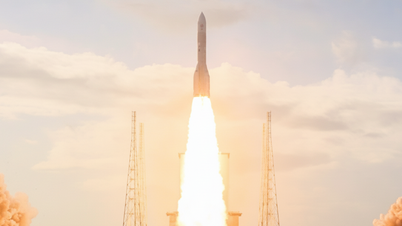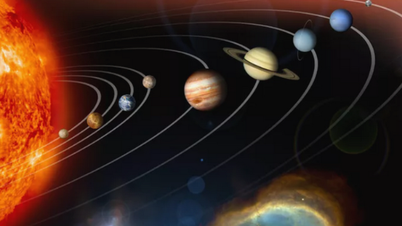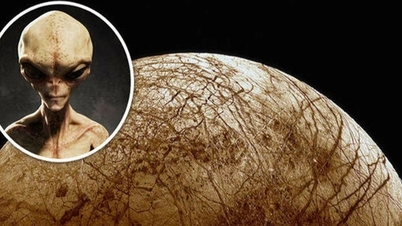If it accumulates enough mass, a celestial body will attract matter towards its center by gravity and arrange the matter until it forms a sphere.

Many planets in the universe are spherical in shape. Photo: Ron Miller/Stocktrek Images
Thanks to telescopes on Earth and in space, astronomers can peer into the far reaches of the universe. No matter how remote or exotic these regions are, one thing seems to be consistent: there are a lot of spherical objects.
"It's interesting that so many things in space that humans know are spherical," Live Science quoted Anjali Tripathi, an astrophysicist in NASA's Exoplanet Exploration Program, working at the Jet Propulsion Laboratory in California, as saying on November 13.
The rounding effect stems from “self-gravity,” the gravitational force an object—in this case, a celestial body—exerts on itself. When a planet, or moon, accumulates enough mass, its self-gravity “moldes” it into a spherical shape.
The universe formed after the Big Bang, about 13.8 billion years ago. Tiny dust particles, moving in giant, doughnut-shaped dust clouds, began colliding with one another. If the collision was light enough, the dust particles would merge, according to NASA. These collisions created a snowball effect: As a planet formed, its gravity increased, attracting more and more matter.
"Gravity pulls all matter towards the centre of gravity. Like a kitchen sink, all the water flows down the hole. In the case of planets, every piece of matter tries to get as close to the centre of gravity as possible," explains astronomer Bruno Merin, head of the European Space Agency's ESAC Science Data Centre.
Planets will continue to move matter around until they find a state of equilibrium, a state where everything is as close to the center as possible. The only shape that achieves such equilibrium in space is a sphere, Merin said.
Mercury and Venus are nearly perfect spheres because they are slow-rotating rocky planets. Ice planets also tend to be nearly perfect circles because their ice is so evenly distributed, Merin said.
Not all planets are perfect spheres, however. The two gas giants, Jupiter and Saturn, bulge at their equators because of their rapid rotations. NASA describes Saturn as looking like a basketball being sat on. Earth also bulges slightly, less than 1%, because of centrifugal force—the outward force exerted by a rotating object. So Earth has a slightly flattened sphere shape.
Space is full of spheres, but some objects are not round at all. Asteroids and comets can take on any shape as they collide and spin through interstellar space. Mars has a potato-shaped moon called Phobos. In fact, only about 20 of the nearly 300 known moons in the solar system are spherical; the rest are more irregular. Tripathi says the reason is that their small masses don’t have enough gravity to create a perfectly round shape.
Thu Thao (According to Live Science )
Source link


![[Photo] Cat Ba - Green island paradise](/_next/image?url=https%3A%2F%2Fvphoto.vietnam.vn%2Fthumb%2F1200x675%2Fvietnam%2Fresource%2FIMAGE%2F2025%2F12%2F04%2F1764821844074_ndo_br_1-dcbthienduongxanh638-jpg.webp&w=3840&q=75)




























































![[VIMC 40 days of lightning speed] Da Nang Port: Unity - Lightning speed - Breakthrough to the finish line](https://vphoto.vietnam.vn/thumb/402x226/vietnam/resource/IMAGE/2025/12/04/1764833540882_cdn_4-12-25.jpeg)

















































Comment (0)